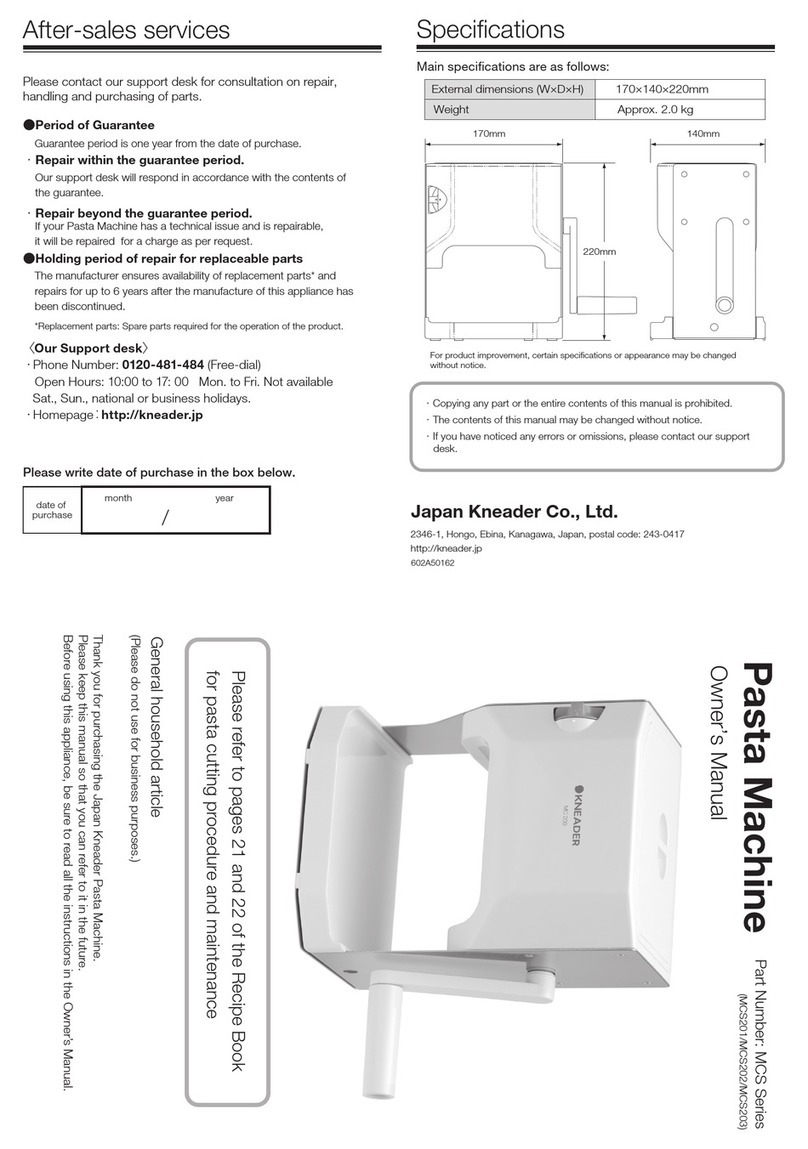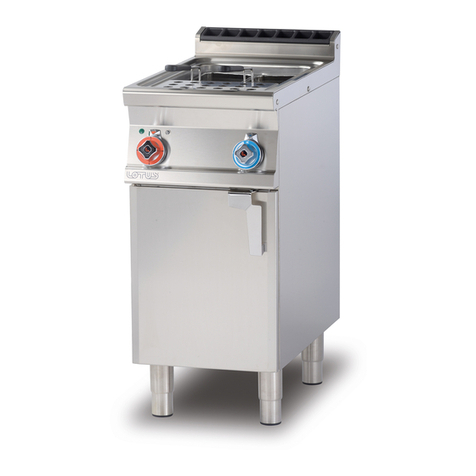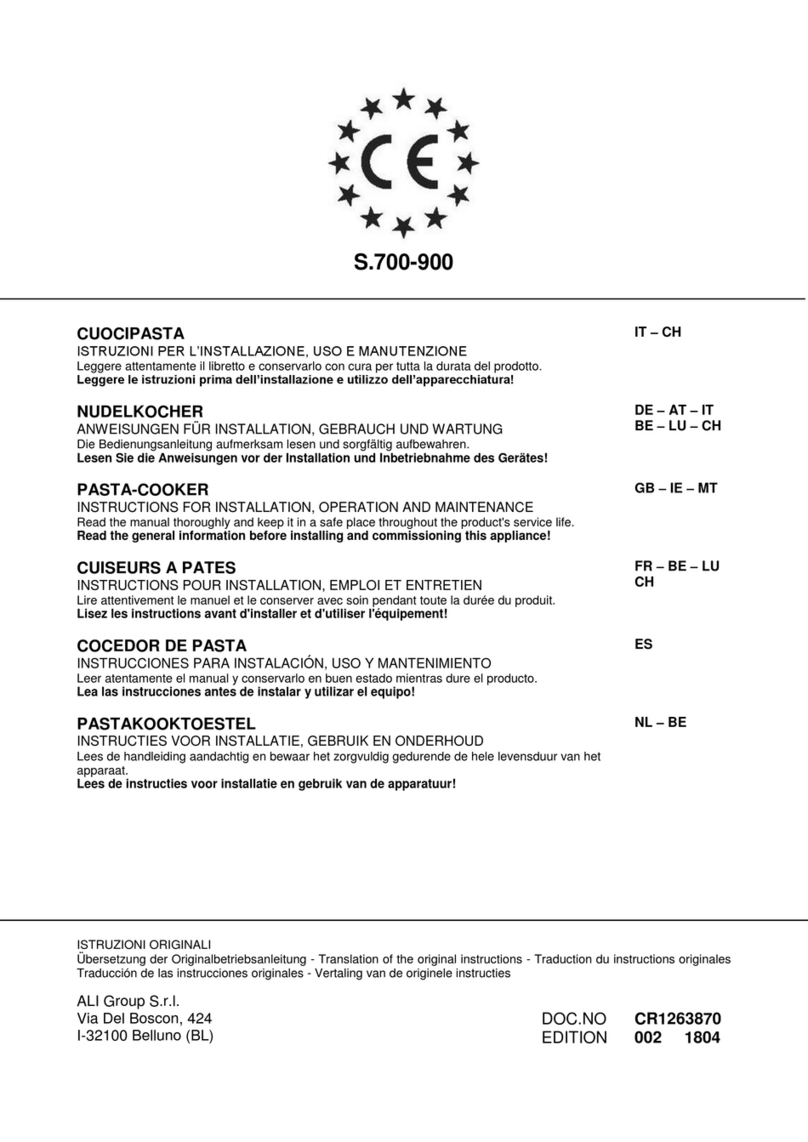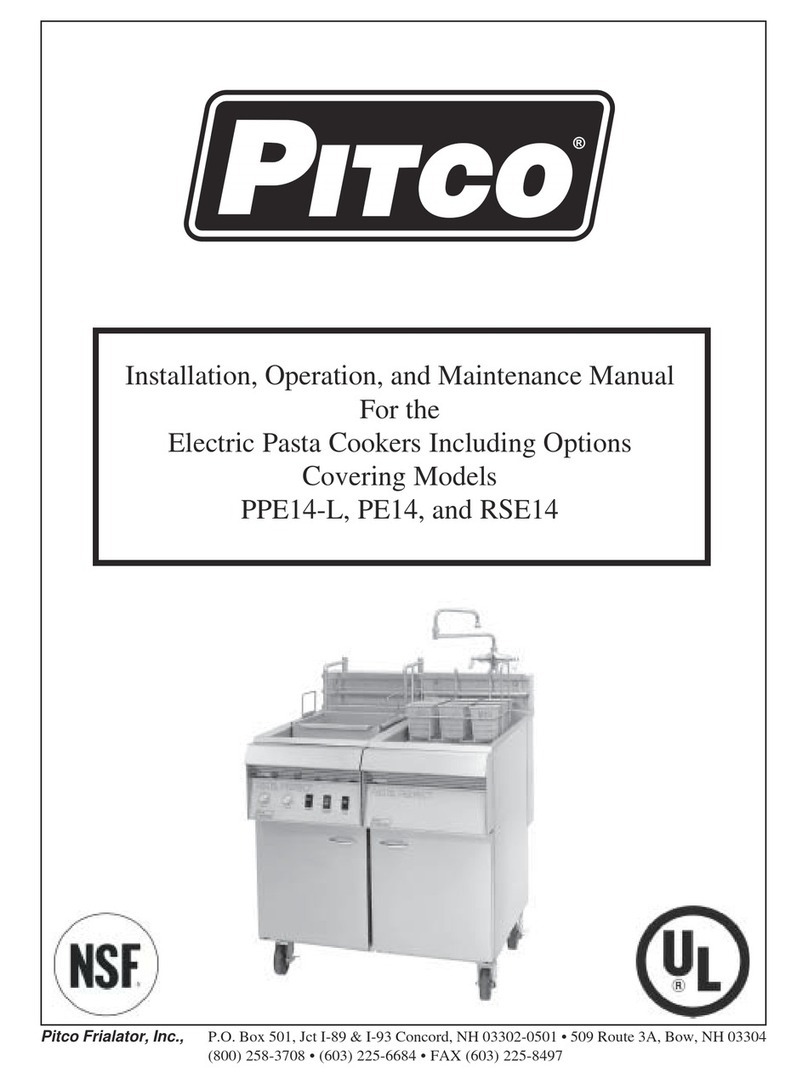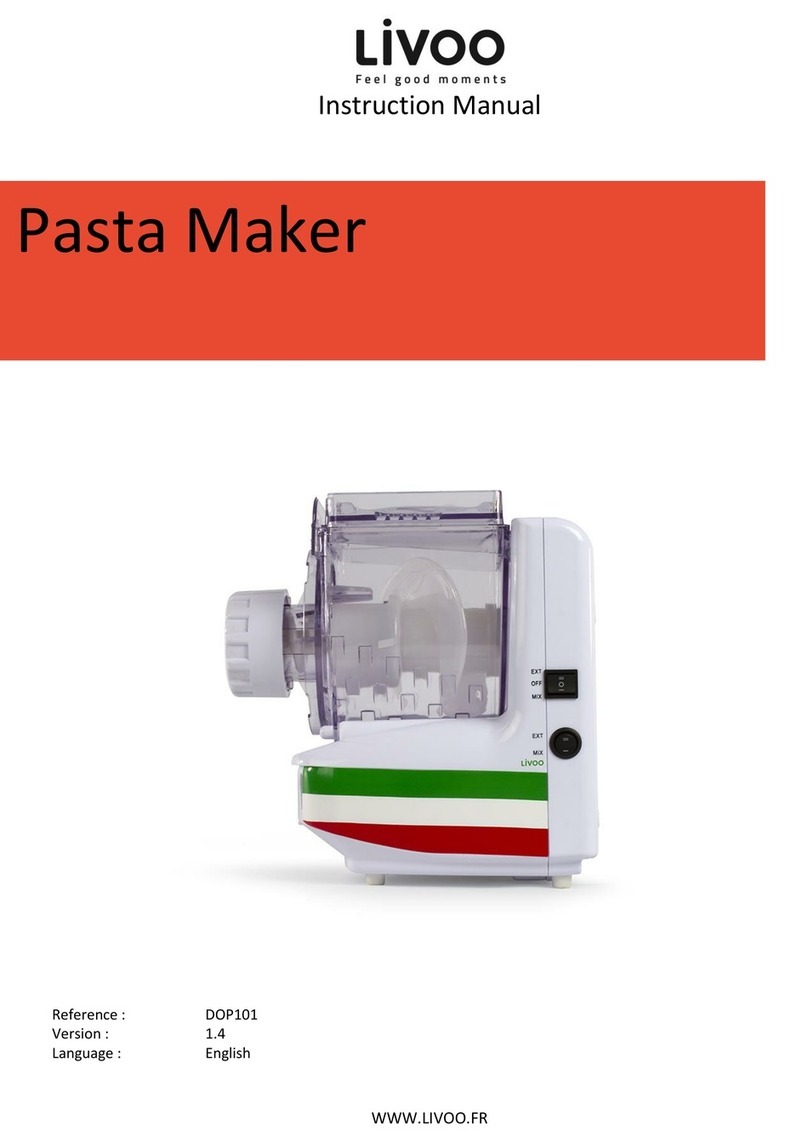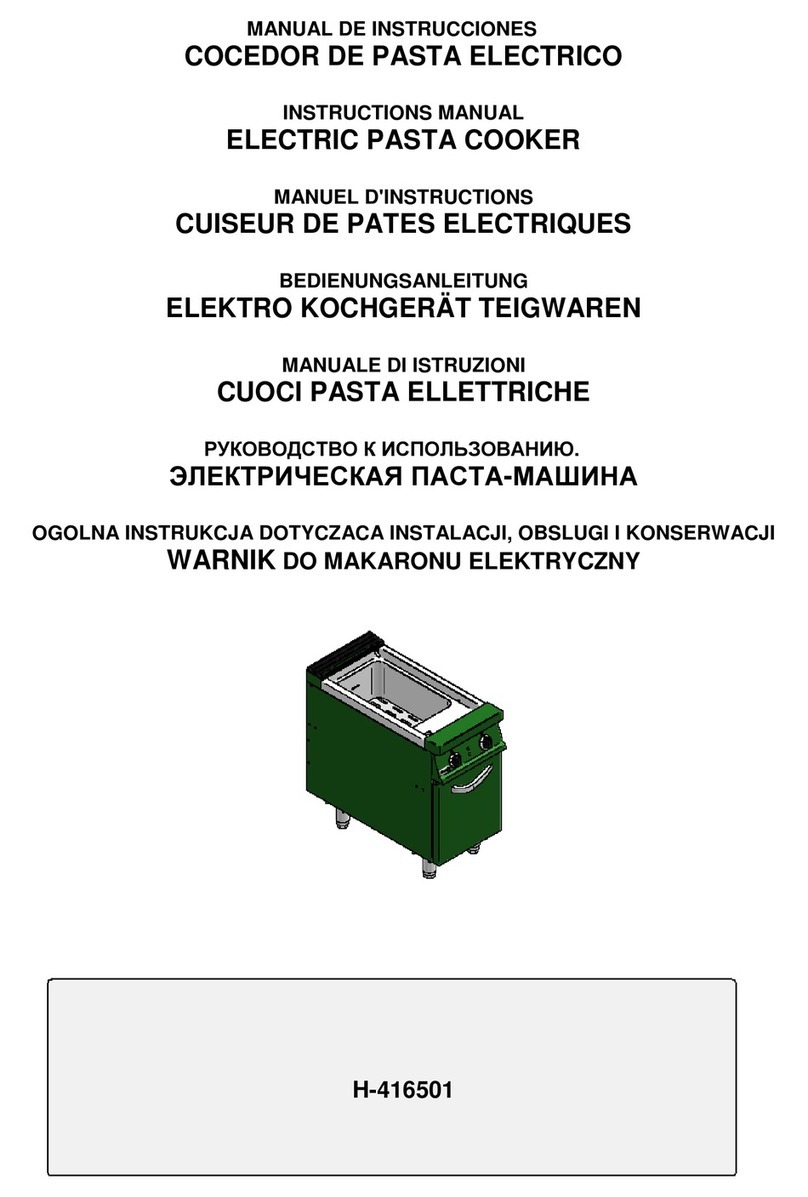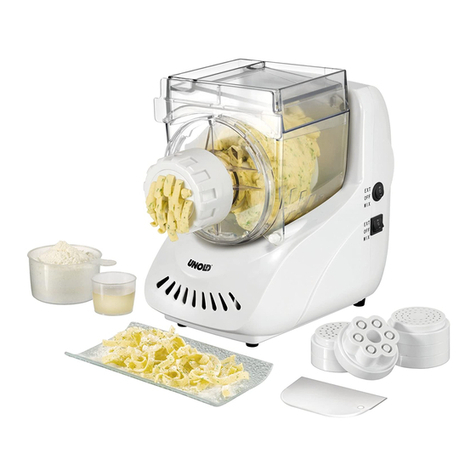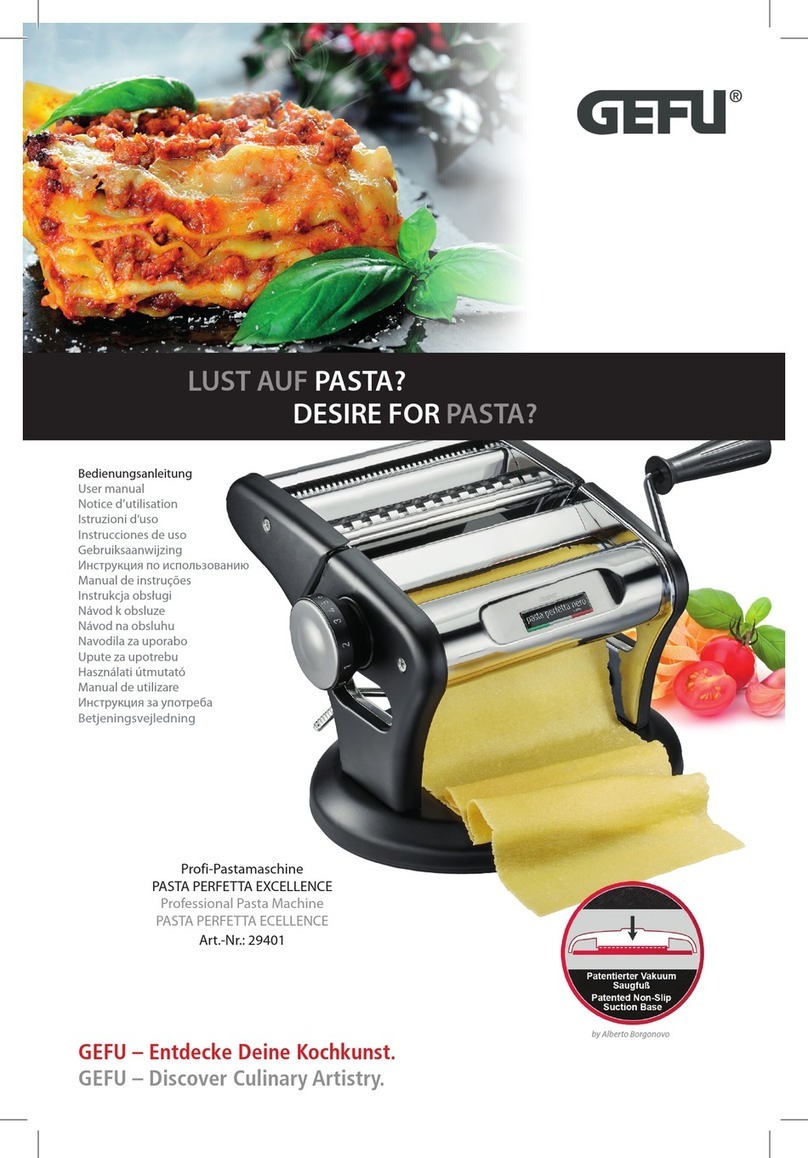
User manual
1
IMPORTANT SAFEGUARDS
When using electrical appliances, basic safety precautions should always be followed to prevent
fire, electric shock, serious personal injury and/or property damage, including the following.
READ ALL INSTRUCTIONS CAREFULLY BEFORE FIRST USE
:::This appliance should not be used by children. Keep appliance and its cord out of the reach of
children and pets. Close adult supervision is necessary when any appliance is used near children.
:::Always place the appliance on a flat, stable and heat-resistant surface. Do not use the appliance
on temperature sensitive surfaces.
:::Do not place the appliance on or near a hot gas or electric burner or in a heated oven or
microwave oven.
:::Keep away from curtains, wall coverings, clothing, dish towels or other flammable materials.
Ensure there is sucient space surrounding the appliance.
:::This appliance is intended for household use only. Do not use outdoors.
:::Do not use this appliance for any other purpose than it’s intended one. Do not use any
accessories that are not recommended by the manufacturer or included with the appliance.
:::Do not leave the appliance unattended. Always unplug the appliance from the electrical outlet
when not in use.
:::Always make sure the lid of the mixing bowl is securely closed during use. Do not attempt to
override the locking mechanism of the lid.
:::Ensure the opening of the shaping disc is not blocked before each use.
:::Do not put fingers or any other object inside the appliance while it is operating. Avoid all contact
with moving parts.
:::Always make sure the motor and mixing blade have stopped working before assembling,
moving, disassembling, or cleaning the appliance.
:::Let the appliance cool for 30 minutes after each cycle. Do not operate the appliance for more
than two consecutive cycles. The appliance could overheat and shut down.
:::Do not put anything on the appliance while in use.
:::Always clean and dry thoroughly each part between all cycles of pasta making. Parts that are not
cleaned thoroughly can aect the consistency of the pasta and the extrusion process may fail.
:::Do not let the power cord hang (over the edge of a table or counter) to avoid tripping. Do not let
the power cord touch hot surfaces.
:::Do not operate the appliance with a damaged cord or plug, after the appliance malfunctions or
has been damaged in any manner. Do not attempt to repair this product yourself. If there is a
problem, please call 1-866-226-9222.
:::To protect against electrical shock, never immerse the power cord, the plug or the machine in
water or other liquid.




